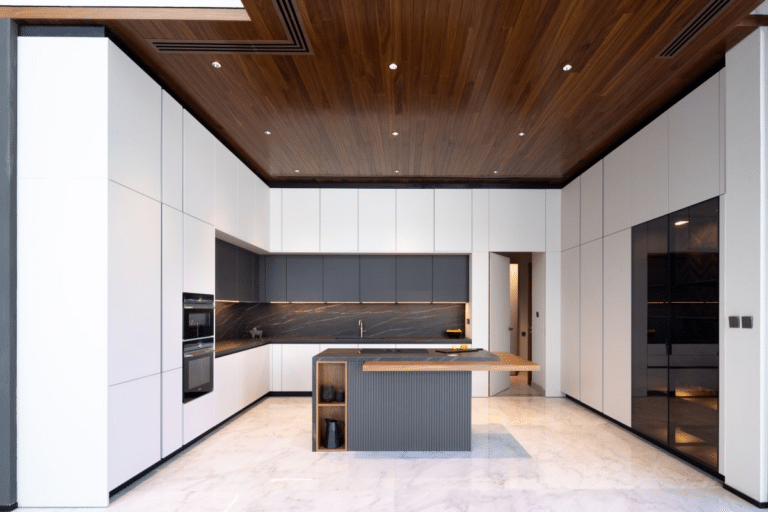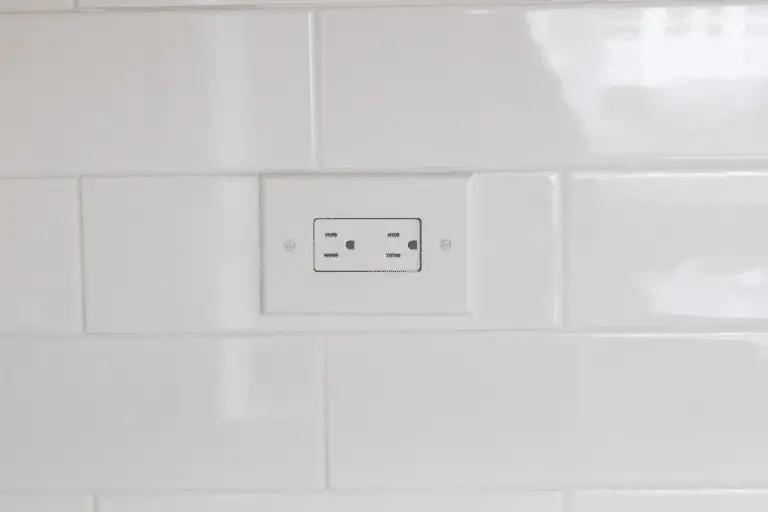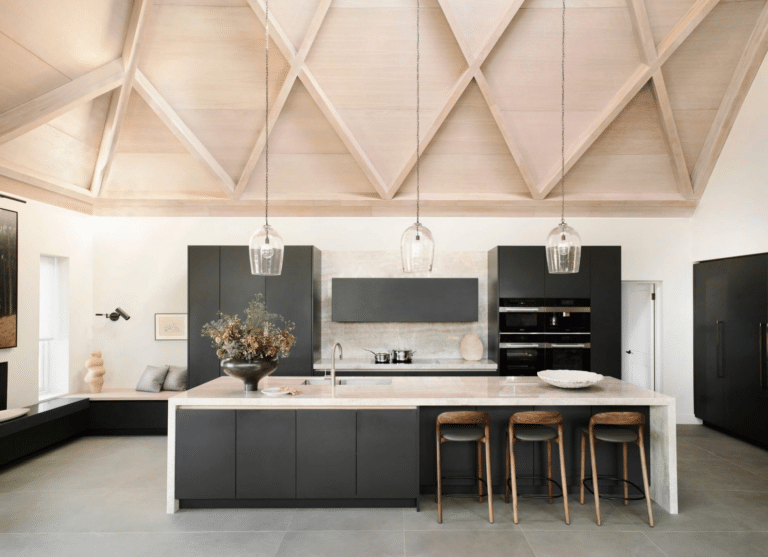Welcome to the world of kitchen design where every little detail counts! Today, we’re diving into the importance of kitchen backsplash heights and the latest trends shaping modern spaces.
From understanding the factors to consider when choosing the right height to exploring the pros and cons of different designs, we’ve got you covered. Get ready to transform your kitchen with practical tips and ideas that will elevate your space to new heights.
Let’s explore the design trends for kitchen backsplash heights together!
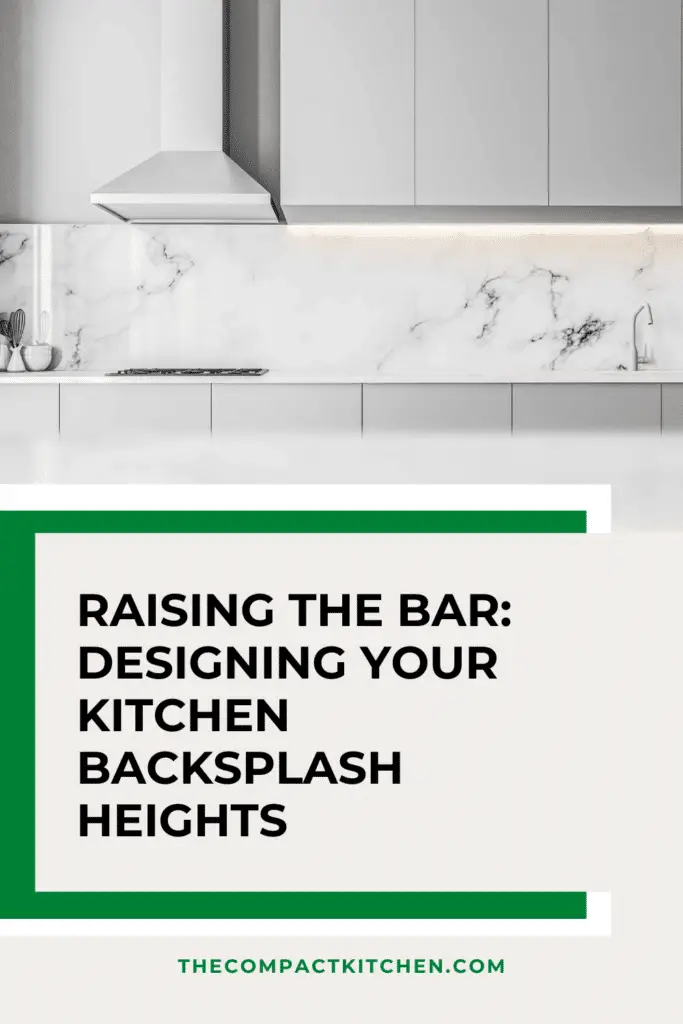
Introduction to Kitchen Backsplash Heights and Design Trends
When it comes to kitchen design, every detail matters. From the color of the cabinets to the style of the countertops, everything plays a crucial role in creating a cohesive and functional space. One often overlooked aspect of kitchen design is the backsplash height.
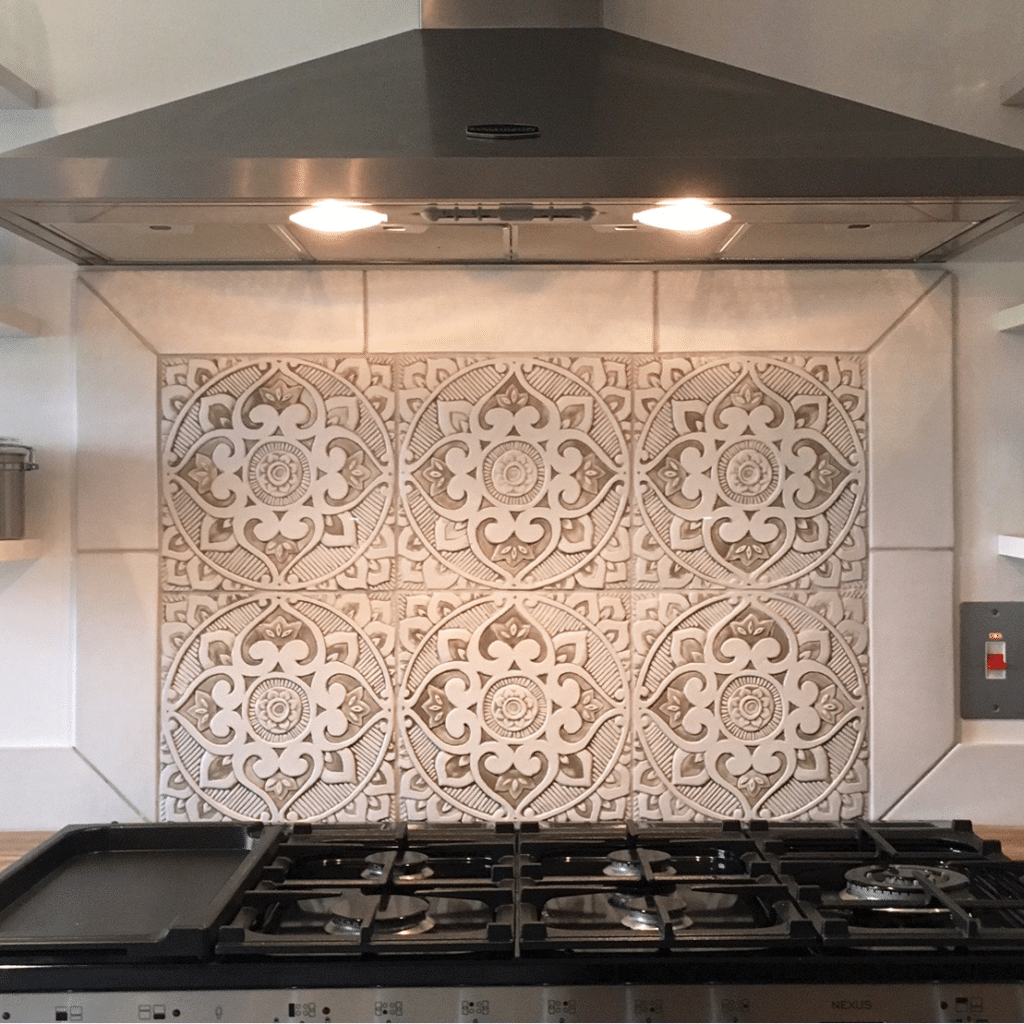
The backsplash serves both a practical and aesthetic purpose in the kitchen. Not only does it protect your walls from splashes and spills, but it also adds a touch of style and personality to the space. Choosing the right backsplash height can elevate the overall look of your kitchen and tie everything together seamlessly.
In recent years, designers have been experimenting with different backsplash height trends to create a more modern and visually appealing space. From full-height backsplashes to designs that extend all the way up to the ceiling, there are plenty of options to choose from when it comes to this design element.
Popular Kitchen Backsplash Height Trends
One of the most popular trends in kitchen backsplash heights is the full-height backsplash. This design choice offers a seamless and cohesive look that can make a small kitchen feel larger and more open. By extending the backsplash all the way up to the ceiling, you can create a continuous flow of design elements that elevate the space and give it a more modern aesthetic.
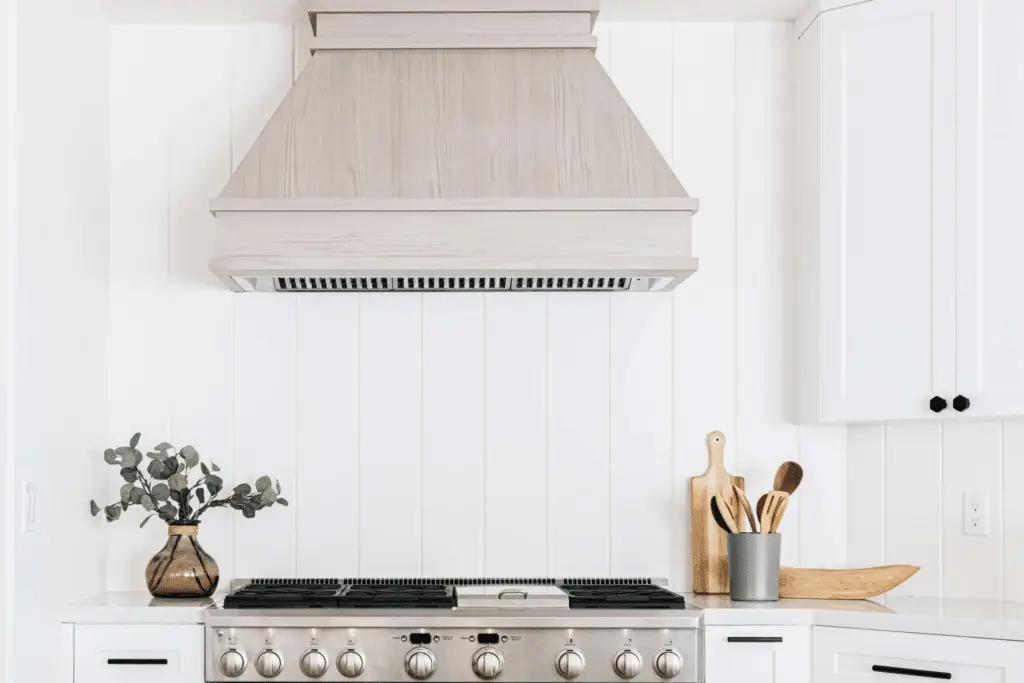
Another trend that has been gaining popularity is the use of backsplashes that extend only partially up the wall. This design choice can create a sense of balance and symmetry in the kitchen and can be a great way to add a pop of color or pattern to the space without overwhelming it.
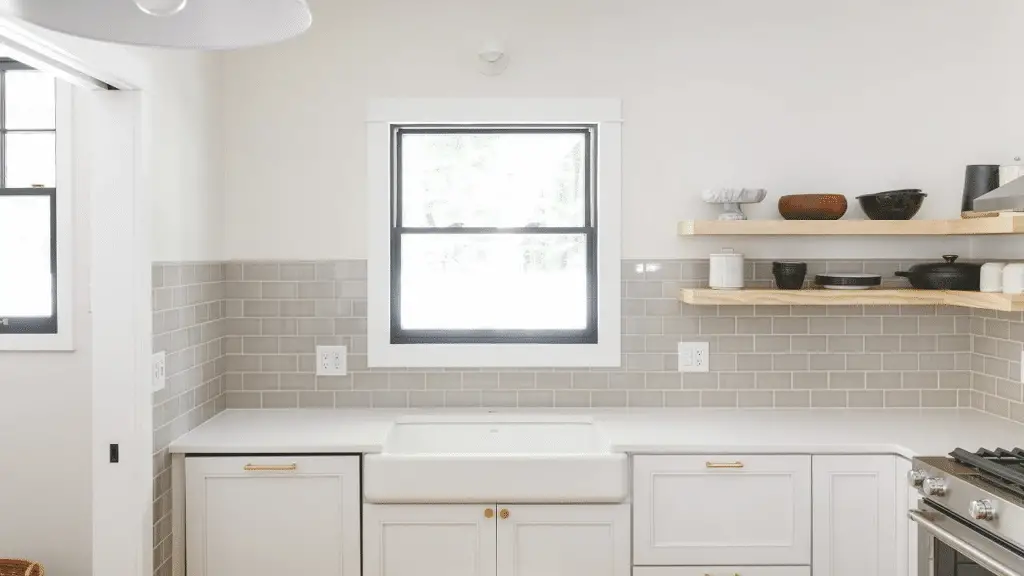
Ultimately, the right backsplash height for your kitchen will depend on your individual taste and the overall design of the space. Whether you prefer a more traditional look or want to experiment with something more modern and trendsetting, there are plenty of options to choose from when it comes to backsplash height design.
Factors to Consider When Choosing Backsplash Height
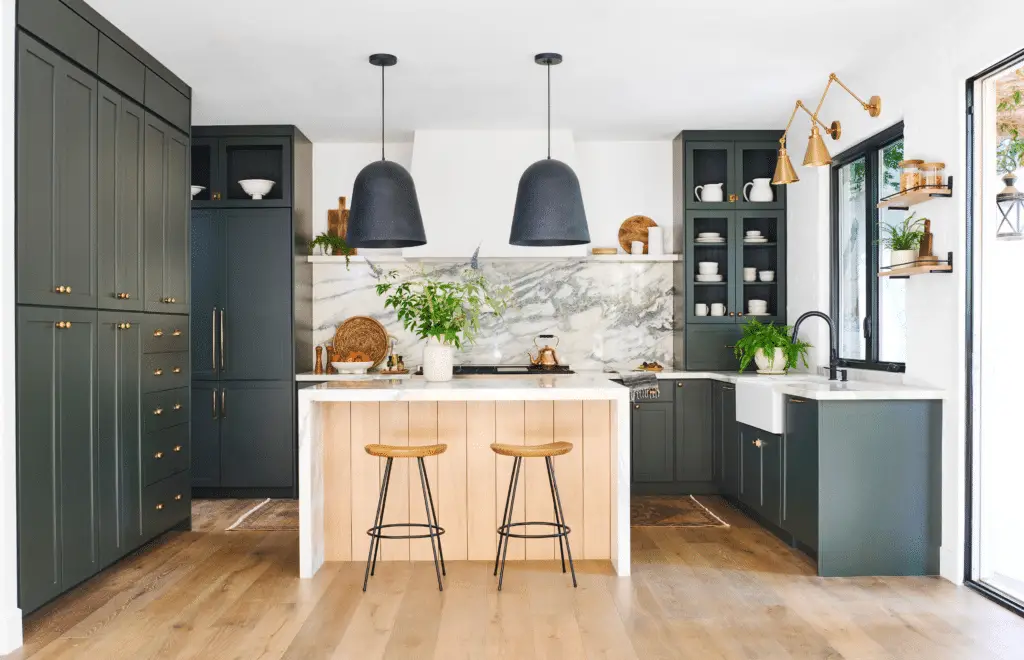
When it comes to designing your kitchen, every detail matters. From the color of the cabinets to the style of the countertops, each element plays a crucial role in creating a space that is not only aesthetically pleasing but also functional. One key aspect of kitchen design that often gets overlooked is the backsplash height. Choosing the right height for your kitchen backsplash is essential for achieving a cohesive and well-balanced look. Let’s dive into the factors that you need to consider when deciding on the perfect backsplash height for your space.
Layout and Space
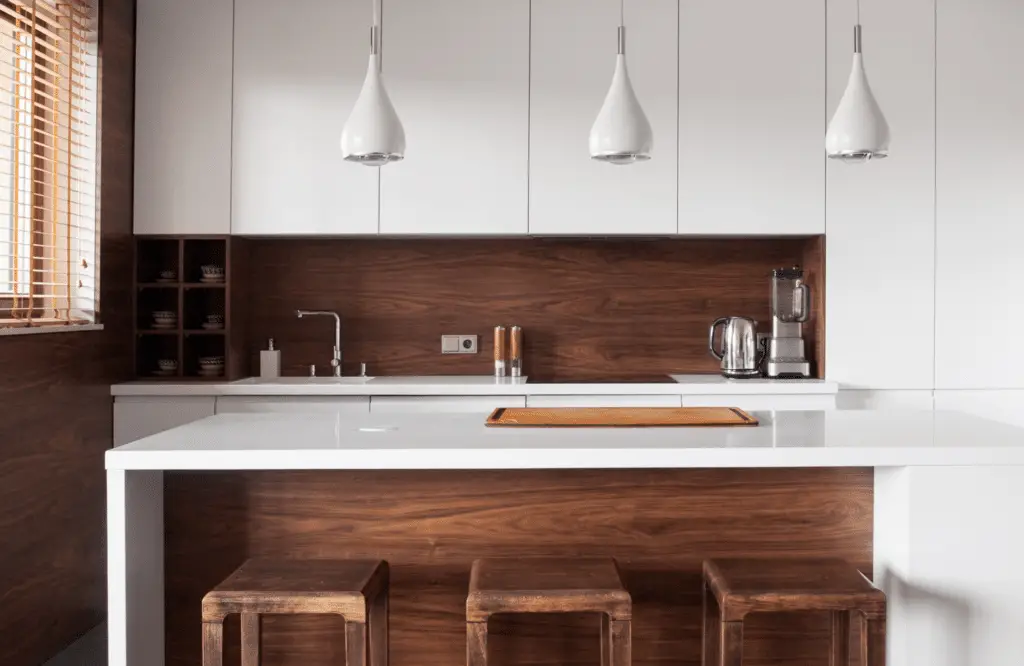
The layout of your kitchen is a significant factor to consider when determining the ideal backsplash height. If you have a small kitchen with limited wall space, opting for a full-height backsplash can help create the illusion of a larger space. On the other hand, if you have a spacious kitchen with high ceilings, you can experiment with backsplashes that extend all the way up to the ceiling for a dramatic look. Consider the overall dimensions of your kitchen and how the backsplash height will impact the visual flow of the space.
Functionality and Practicality
While aesthetics are important, functionality should not be compromised when choosing a backsplash height. The backsplash serves as a protective barrier against splashes and spills, so it’s essential to select a height that will effectively shield your walls from any mess. Additionally, the backsplash height should complement the height of your countertops, cabinets, and kitchen appliances. A harmonious relationship between these elements will ensure a seamless and cohesive design that is both practical and visually appealing.
Pairing with Countertops and Cabinets
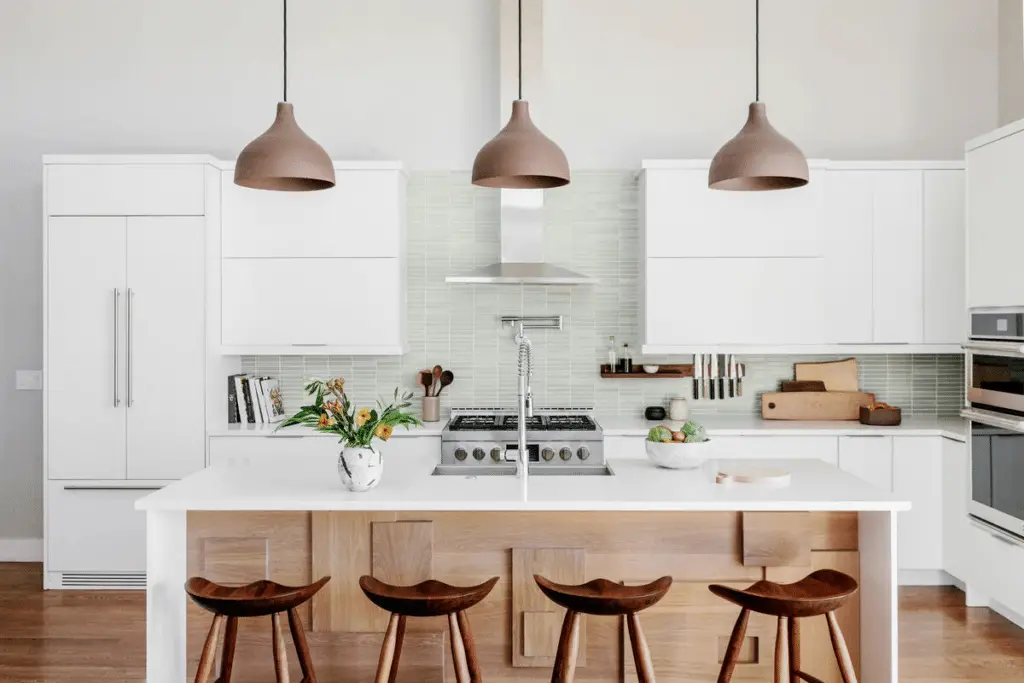
Another critical factor to consider is how the backsplash height will interact with your countertops and cabinets. Choose a backsplash height that creates a balanced visual relationship with these other elements. For example, if you have low cabinets and countertops, a full-height backsplash may overwhelm the space. In this case, a shorter backsplash that aligns with the bottom of the upper cabinets might be more suitable. On the other hand, if you have tall cabinets and countertops, a taller backsplash that extends to the ceiling can create a sense of continuity and elegance.
Latest Design Trends for Kitchen Backsplash Heights
When it comes to kitchen design, the backsplash is often a focal point that can make a big impact on the overall look and feel of the space. In recent years, there has been a shift towards embracing full height backsplashes and backsplashes that extend all the way up to the ceiling. These design trends are not only visually stunning but also offer a range of benefits for modern kitchens.
Full Height Backsplashes
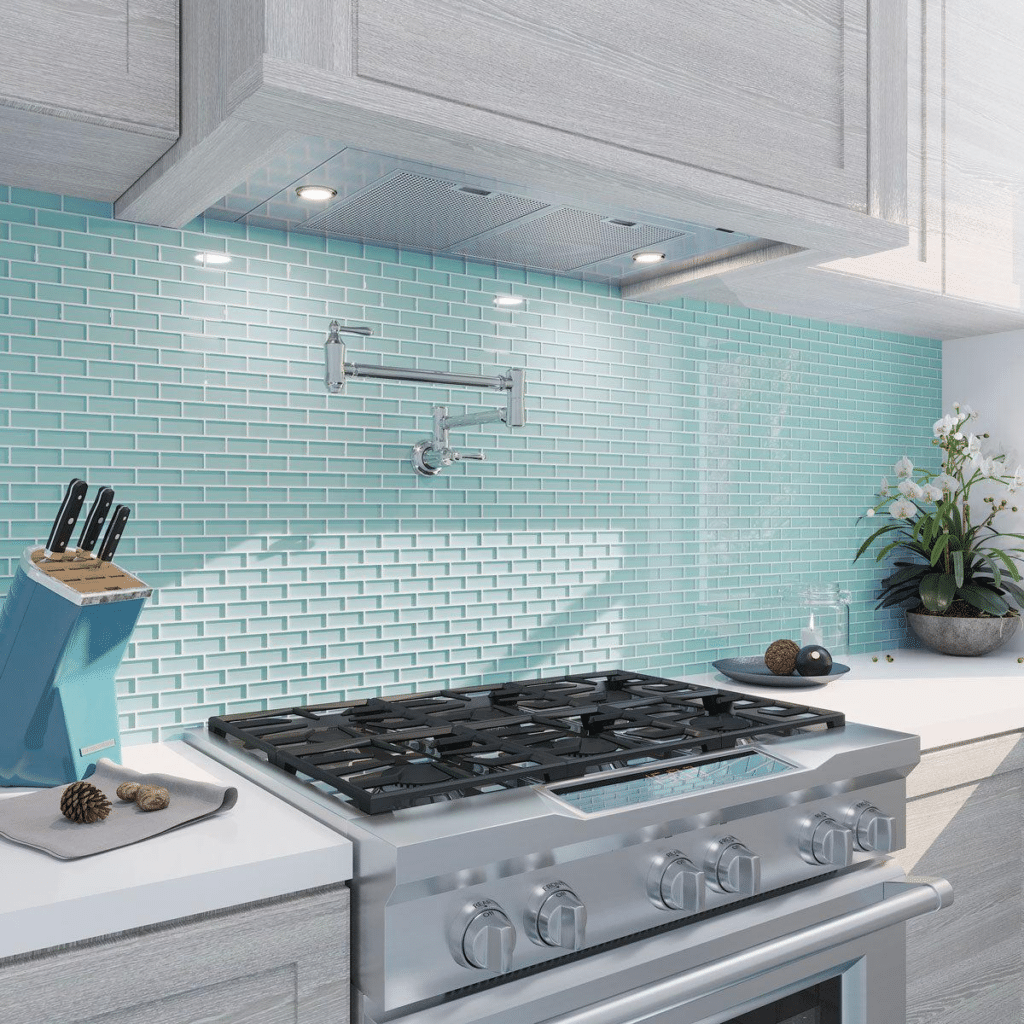
One of the most popular trends in kitchen backsplash heights is the full height backsplash. This design choice involves extending the backsplash all the way from the countertop to the upper cabinets, creating a seamless and cohesive look. Full height backsplashes have gained popularity for their ability to add a touch of drama and sophistication to any kitchen.
One of the key advantages of full height backsplashes is their ability to visually expand the space, making small kitchens feel larger and more open. Additionally, full height backsplashes can help to create a sense of unity in the kitchen by tying together the different elements of the room. This trend is particularly well-suited for modern kitchens with sleek lines and minimalist aesthetics.
Backsplashes Extending Up to the Ceiling
Another design trend that has been gaining traction in recent years is the use of backsplashes that extend all the way up to the ceiling. This bold design choice can create a sense of height and grandeur in the kitchen, drawing the eye upwards and making the space feel larger and more expansive.
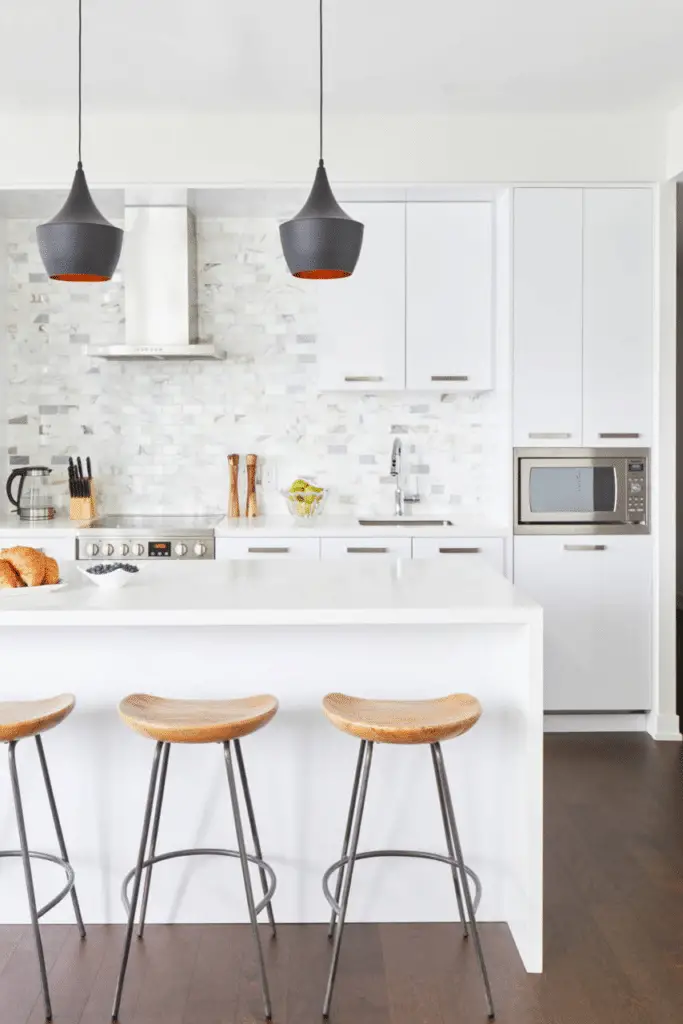
Extending the backsplash up to the ceiling can also help to accentuate the vertical lines of the room, creating a sense of rhythm and flow. This trend works particularly well in kitchens with high ceilings, where it can help to fill the vertical space and create a sense of balance.
Overall, the latest design trends for kitchen backsplash heights are all about pushing the boundaries and exploring new possibilities for modern aesthetics. Whether you opt for a full height backsplash or a backsplash that extends up to the ceiling, these design choices can have a transformative impact on the look and feel of your kitchen. By embracing these trends, you can create a space that is not only visually stunning but also highly functional and on-trend.
The Pros and Cons of Different Backsplash Height Designs
When it comes to designing your kitchen backsplash, the height plays a crucial role in not only making a visual statement but also in enhancing the overall functionality of your space. In this section, we will take a closer look at the pros and cons of different backsplash height designs to help you make an informed decision that suits your individual preferences and requirements.
Full Height Backsplashes

One of the popular trends in kitchen design is the use of full height backsplashes, which extend from the countertop all the way up to the ceiling. This design choice creates a seamless and cohesive look in the kitchen, giving it a modern and sleek aesthetic. One of the main advantages of full height backsplashes is that they can help to visually enlarge the space, making the kitchen feel larger and more spacious.
However, one drawback of full height backsplashes is that they can be more challenging to clean and maintain compared to standard height backsplashes. The larger surface area means more grout lines and tiles to clean, which can be time-consuming and labor-intensive.
Standard Height Backsplashes
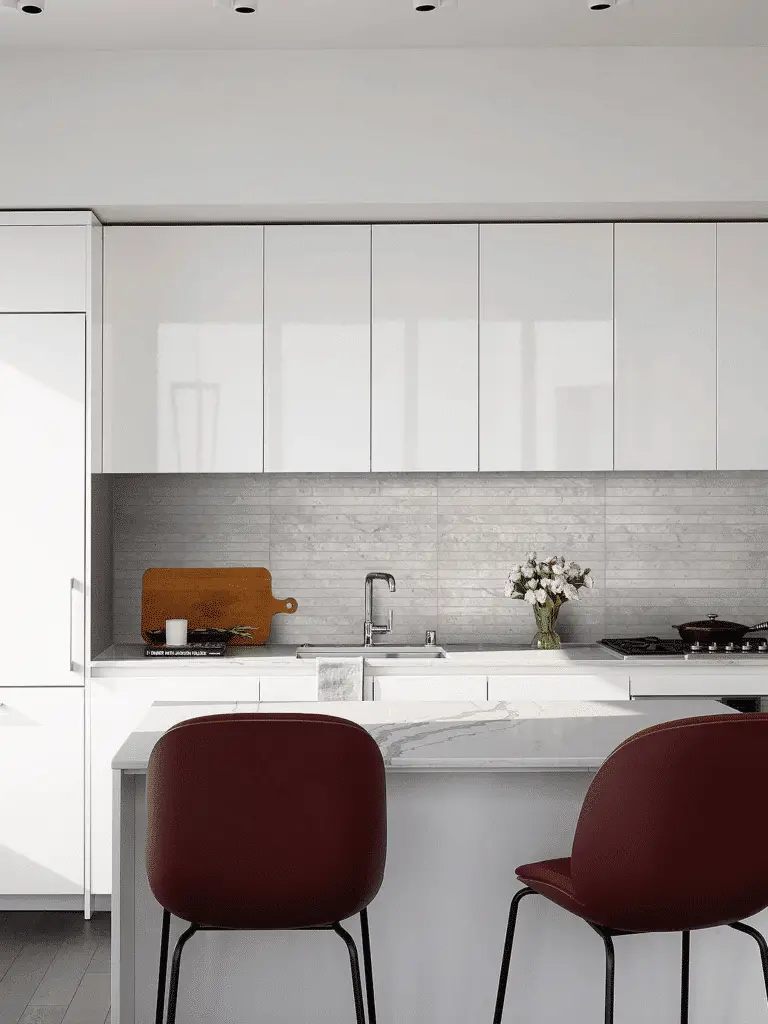
On the other end of the spectrum are standard height backsplashes, which typically reach just a few inches above the countertop. While not as visually impactful as full height backsplashes, standard height backsplashes are a classic choice that can complement a wide range of kitchen styles and designs. They are also easier to clean and maintain compared to full height backsplashes, making them a practical option for busy households.
One of the drawbacks of standard height backsplashes is that they may not offer as much design impact or visual interest as their taller counterparts. If you are looking to make a bold statement in your kitchen, a standard height backsplash may not be the best choice for you.
Partial Height Backsplashes
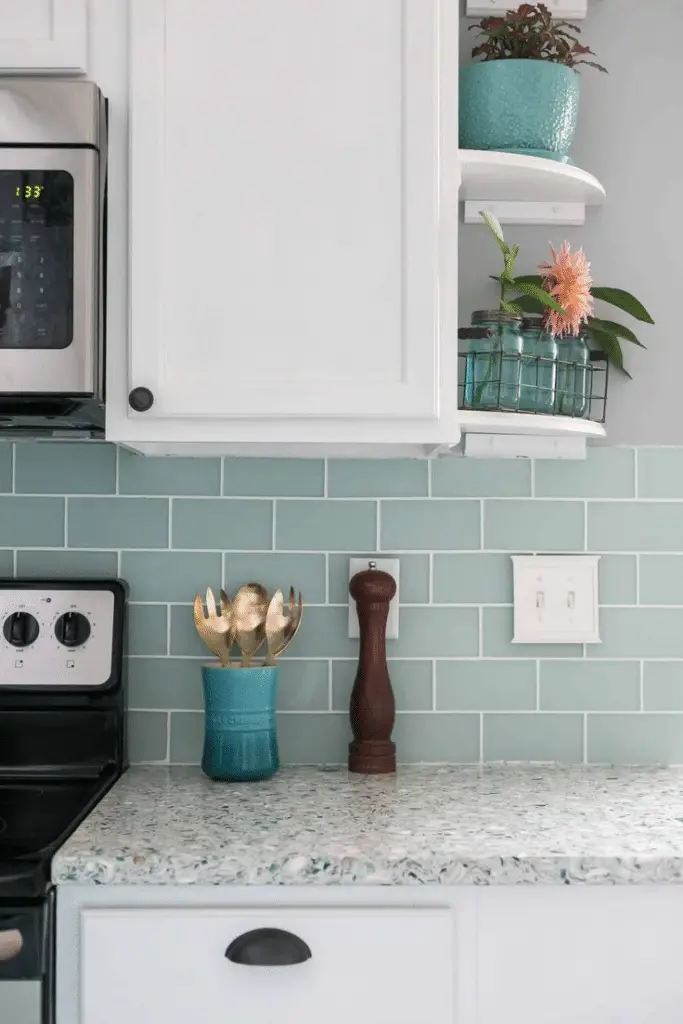
For those who want to strike a balance between full height and standard height backsplashes, partial height backsplashes are a great option. These backsplashes typically extend halfway up the wall, providing a happy medium between the two extremes. Partial height backsplashes can add a decorative element to the kitchen without overwhelming the space or requiring extensive cleaning.
One of the advantages of partial height backsplashes is that they offer a good compromise between design impact and practicality. However, one drawback is that they may not have the same visual impact as full height backsplashes, especially in kitchens with high ceilings.
In conclusion, the choice of backsplash height design for your kitchen will ultimately depend on your individual preferences, lifestyle, and design aesthetic. By weighing the pros and cons of different backsplash height designs, you can make an informed decision that enhances both the look and functionality of your kitchen.
Transforming Your Kitchen: Implementing the Right Backsplash Height Design
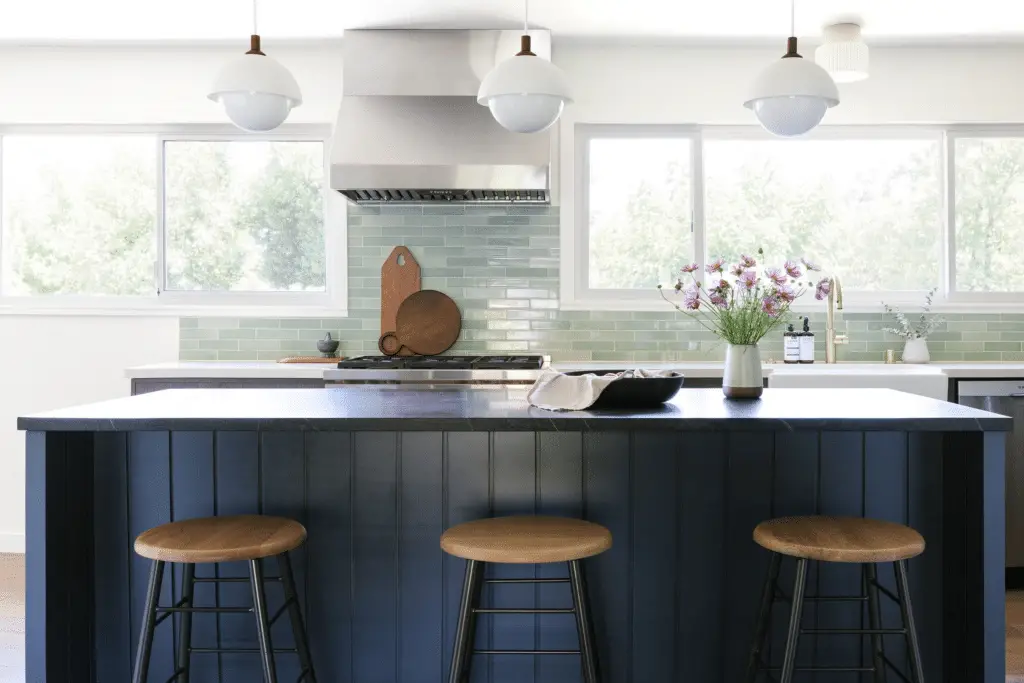
When it comes to transforming your kitchen, choosing the right backsplash height design can have a significant impact on the overall look and functionality of the space. In this section, we will discuss practical tips and ideas for incorporating trendsetting backsplash height designs in your kitchen, as well as tricks for making the most out of your kitchen space with the right backsplash height design.
Consider Full Height Backsplashes
One of the latest design trends in kitchen backsplash heights is the use of full height backsplashes. This design choice creates a seamless and cohesive look that can add a touch of elegance and sophistication to your kitchen. By extending the backsplash all the way up to the ceiling, you can make a bold statement and create a visually stunning focal point in the room.
When implementing full height backsplashes in your kitchen, it’s important to consider the overall aesthetic of the space. Choose a backsplash material and color that complements the rest of your kitchen design, such as your countertops, cabinets, and flooring. This will help create a harmonious and cohesive look that ties the room together.
Optimize Space with the Right Backsplash Height
Another key consideration when implementing a backsplash height design is space optimization. Depending on the layout and size of your kitchen, choosing the right backsplash height can help maximize space and create a more functional and efficient cooking environment.
For smaller kitchens, opting for a backsplash that extends all the way up to the ceiling can help create the illusion of space and make the room feel larger and more open. On the other hand, in larger kitchens, you may have the flexibility to experiment with different backsplash height designs, such as varying heights or patterns, to add visual interest and personality to the space.
Get Creative with Backsplash Height Designs
When it comes to implementing the right backsplash height design in your kitchen, don’t be afraid to get creative and think outside the box. Consider using unconventional materials or patterns to create a unique and personalized look that reflects your individual style and personality.
For example, mixing and matching different types of tiles, such as subway tiles and mosaic tiles, can add texture and dimension to your backsplash design. Additionally, experimenting with different heights, angles, and patterns can help create a dynamic and visually appealing backsplash that stands out in the room.
In conclusion, when transforming your kitchen with the right backsplash height design, consider the latest trends, optimize space, and get creative with your design choices. By incorporating trendsetting backsplash height designs in your kitchen, you can create a stylish and functional space that reflects your unique personality and style.
Splash into Style: Elevating Your Kitchen with Trendy Backsplash Heights
In conclusion, choosing the right backsplash height is crucial for a stylish and functional kitchen. Consider factors like layout and aesthetics to determine the perfect height for your backsplash. Embrace the latest trends, from full-height backsplashes to ceiling-reaching designs, to create a modern look. Remember to weigh the pros and cons of each design before making a decision. With the right backsplash height, you can transform your kitchen into a trendy and practical space. So, let’s elevate your kitchen design and make a splash with your backsplash!





